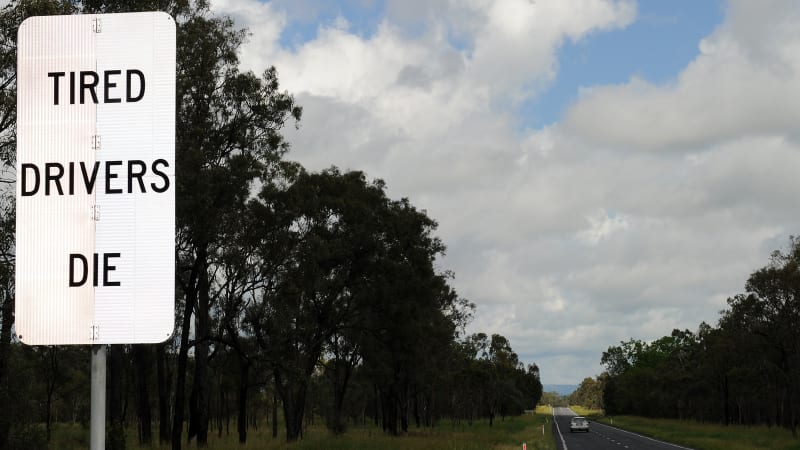Think you're not dangerously drowsy during a long drive? Bet you are

A sign on the Bruce Highway south of Mackay, Australia. (AFP/Getty)
When in doubt, take a nap. In fact, take a nap even if you’re not in doubt.
Pull off the road and stop the car, sip a coffee and close your eyes.
That’s some of the advice offered based on a study presented by the American Automobile Association, which found that drowsiness — a condition it says is too often ignored by drivers — plays a large and often underestimated role in traffic crashes, injuries, and deaths.
For long-haul drivers, and indeed any driver susceptible to nodding off on even short routes, the study’s findings are provocative. Becoming less alert behind the wheel can be deadly: Crashes caused by drowsy driving tend to be severe because the driver may not attempt to brake or swerve to avoid a collision.
“Being drowsy while driving is a dangerous form of impairment, and it does not resolve or improve with continued driving,” said Dr. David Yang, president and executive director of the AAA’s Foundation for Traffic Safety. “Our goal is to help drivers learn to heed the early warning signs of drowsiness so they can stop, rest, and then continue their journey as safely as possible.”
Participants in the research project drove a 150-mile simulated route at night and took regular breaks. Some rated their levels of drowsiness as low, when in fact three out of four were found to be moderately or severely drowsy. And even when drivers recognized that they were extremely drowsy, “they still declined 75 percent of their opportunities to take breaks and kept driving,” the report said.
The AAA’s suggestions for avoiding drowsiness are rather obvious, but worth noting: Don’t take medications that cause such conditions before a trip; limit yourself to one Big Mac and a small fry before hitting the road, and force yourself to take naps. “Pulling into a rest stop and taking a quick catnap — at least 20 minutes and no more than 30 minutes of sleep — can help to keep you alert on the road,” the report suggests.
The project was conducted at the National Advanced Driving Simulator at the University of Iowa. Ninety participants (50 male/40 female; average age 31.4 years) completed the study. Established in 1947 by AAA, the Foundation for Traffic Safety is a nonprofit, publicly funded research and educational organization.



